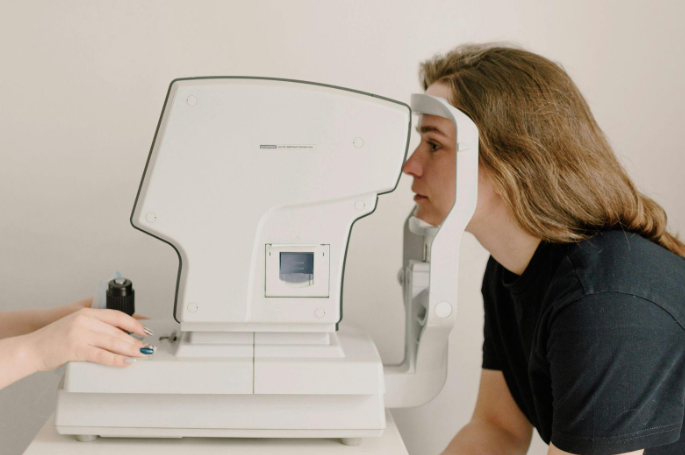Diabetic Eye Disease: What You Need To Know
November is Diabetic Eye Disease Awareness Month and our team here at Baptist Eye Surgeons wants you to be prepared. Diabetic eye disease isn’t actually one disease, but a term for a broad range of diseases connected with high blood sugar. If you’re diabetic or know someone who is, you’ll want to know what to watch out for and how to help.
To help you better understand diabetic eye disease, we’ll look at:
- Diabetic retinopathy
- Glaucoma and diabetes
- Diabetic macular edema
- Cataracts and diabetes
- Diagnosing and treating diabetic eye disease
While it can result in vision loss if left untreated, diabetic eye disease can be caught early through annual comprehensive eye exams. This can help your eye doctor act quickly and prevent any vision loss from getting worse.
Diabetic Retinopathy
Diabetic retinopathy occurs when high blood sugar causes the blood vessels in the retina to swell and eventually become blocked. These blood vessels help keep the eye healthy. However, they can cause your eyes to try and grow new blood vessels when blocked. Unfortunately, these new blood vessels don’t work properly and tend to leak.
Diabetic retinopathy comes in two types:
- Early diabetic retinopathy
- Advanced diabetic retinopathy
Early diabetic retinopathy , also known as NPDR , is the more common of the two. This type of retinopathy results in weakened blood vessels with bulges in smaller blood vessels that leak blood and other fluid into your retina. Large blood vessels, nerve fibers, and the macula of the retina can also swell, resulting in vision loss or blindness.
If left untreated, NPDR can develop into advanced diabetic retinopathy . Also known as proliferative diabetic retinopathy , this form of the disease causes the already damaged blood vessels to close off. While your body will naturally begin to grow new blood vessels, they aren’t nearly as strong as your old ones and can allow fluids to leak into the center of your eye.
The growth of new blood vessels may also cause:
- Scar tissue to develop
- Increased pressure in the eye
The creation of new scar tissue can cause your retina to detach from the back of your eye. Increased eye pressure can result in optic nerve damage that leads to glaucoma.
Glaucoma and Diabetes
Just like the term diabetic eye disease , glaucoma is a blanket term for a group of eye problems that gradually damage the optic nerve. They tend to be caused by the buildup of fluid in the front of your eye. Over time, pressure from the fluid buildup damages your optic nerve.
Common symptoms of glaucoma include:
- Decreased night vision
- Poor peripheral vision
- Increased redness in one or both eyes
- Eye pain
- Recurring mild headaches
Adults over the age of 40 are at the highest risk for glaucoma, although you can develop it at any age. Experts believe that there are around 150 million people living with glaucoma who haven’t been diagnosed. Those with diabetes are twice as likely to develop the disease than non-diabetics. Make sure you’re getting regular comprehensive eye exams to treat or catch any problems before they have the chance to develop into something much more serious. For more information concerning glaucoma, you can download our Complete Guide to Glaucoma on our website.
Diabetic Macular Edema
We touched on diabetic macular edema briefly when discussing diabetic retinopathy, but it would be a good idea to take a closer look at the disease. Diabetic macular edema occurs when blood vessels in the eyes swell due to diabetic retinopathy. These are known as microaneurysms and can leak blood and other fluids into the retina.
As the swelling spreads, it can eventually work its way to the back of the eye and cause the macula to swell, too. Also known as edema , this fluid-caused swelling can lead to serious vision problems such as blurred vision and colors appearing to be faded. If left untreated, diabetic macular edema can eventually lead to blindness.
Cataracts and Diabetes
Cataracts are a condition that affects the lens of the eye. Located behind the pupil, the lens aids the cornea in directing light to the retina. Cataracts interfere with the lens’s ability to help light enter by causing it to become clouded. Cataracts can have many causes, such as getting older, heredity, and past injuries. However, they can also be caused by diabetes.
Cataracts usually become noticeable when you start to detect a constant glare or “filminess” whenever you’re exposed to bright light. Also known as clouding , this dulled vision doesn’t need to be severe to qualify as a cataract. Schedule an appointment with your eye doctor if you notice any amount of clouding in your vision and get it treated immediately.
Diagnosing and Treating Diabetic Eye Disease
The primary symptom of diabetic eye disease is vision loss. This is because other symptoms can’t be diagnosed until some vision loss has occurred. It’s also why getting annual comprehensive eye exams is so important.
During a comprehensive eye exam, your eye doctor will be able to check for:
- Changes in the macula
- Damage to nerve tissue
- Changes in the blood vessels
- Changes in the lenses
Comprehensive eye exams are essential for the early detection of diabetic eye disease. They allow your eye doctor to come up with a gameplan to treat your condition as well as provide follow-up care that will help prevent further vision loss.
Baptist Eye Surgeons is an ophthalmological practice in Knoxville, TN, and Morristown, TN. Visit our website to meet our doctors and learn more about our specialties, or give us a call at 865-579-3920 for more information or to schedule an appointment .





